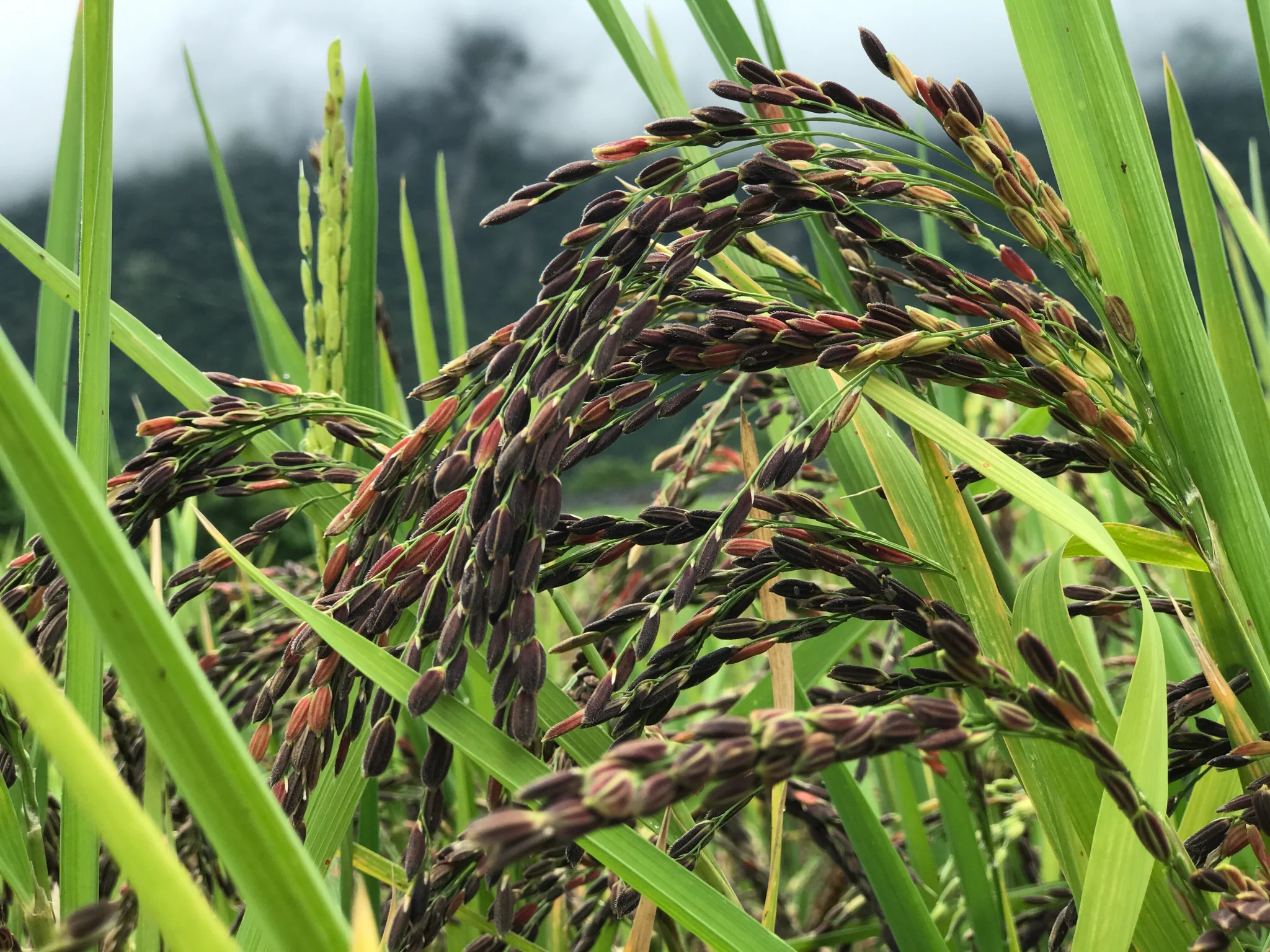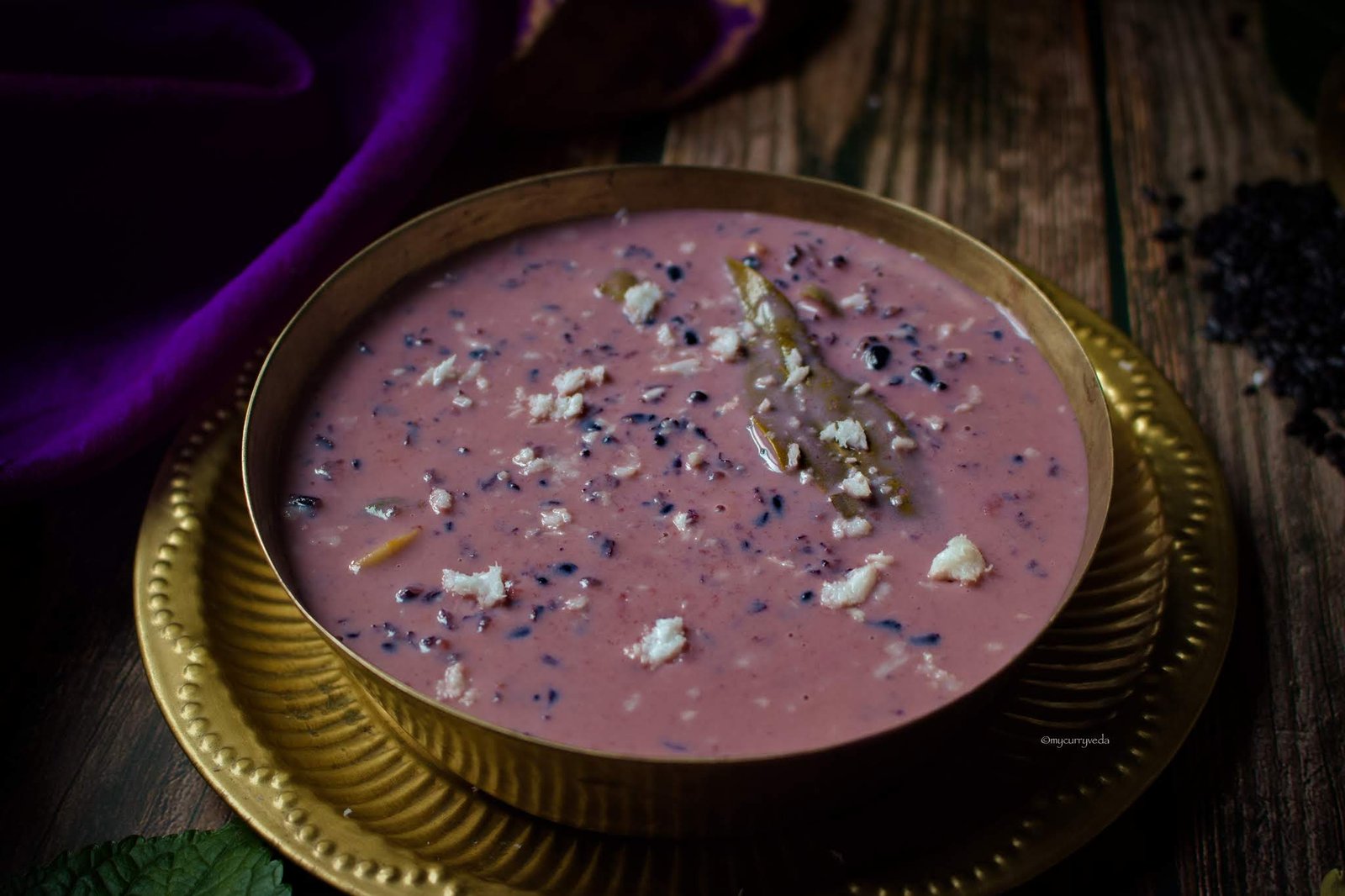
Summary of Contents
Introduction
Known as Chakhao, this unique black rice from Manipur is celebrated for its deep purple-black color, distinct aroma, and powerful health benefits. While most rice varieties are white or brown, Chakhao’s color sets it apart, hinting at its rich antioxidant content. This nutrient-packed rice is so prized that it’s often called “black gold.”
In Manipuri culture, Chakhao is more than just rice; it’s a symbol of heritage. This ancient rice variety is traditionally used in festivals and religious ceremonies, where its unique flavor and color enhance celebratory dishes. Chakhao is often prepared as sweet pudding or in kheer during these events, showcasing its versatility in local cuisine.
This post explores the origins, cultural roots, health benefits, and culinary uses of Chakhao, aiming to inspire readers to appreciate this unique rice and perhaps add it to their own meals as a health-boosting superfood.
What is Chakhao?
Chakhao, or black rice, is native to Manipur, where it has been cultivated for centuries. Historically, it was grown by the royal families of Manipur, adding to its prestige as a “royal” food. Today, it remains integral to Manipuri cuisine and is highly valued for its unique taste and health-promoting qualities.
Distinct Features
Chakhao is instantly recognizable due to its dark purple-black hue and aromatic quality. This rice has a nutty flavor and slightly chewy texture that make it distinct from regular rice varieties. Its deep color comes from anthocyanins, powerful antioxidants also found in berries, giving it both visual appeal and health value.
Why It’s Known as Black Gold
The high nutritional value and limited production of Chakhao have earned it the nickname “black gold.” Its reputation as a superfood has driven demand worldwide, and the growing recognition of its health benefits has made it more sought after than ever.
Nutritional and Health Benefits of Chakhao

Rich in Antioxidants
Chakhao rice is loaded with anthocyanins, antioxidants that help combat oxidative stress and reduce inflammation. These antioxidants are responsible for its black color and play a significant role in supporting overall health and reducing the risk of chronic diseases.
High Fiber and Protein Content
Chakhao is not just rich in antioxidants; it also contains high levels of fiber and protein, making it excellent for digestive health and muscle support. The fiber content aids in digestion and helps control cholesterol, while the protein provides essential amino acids that benefit muscle health.
Low Glycemic Index
With a low glycemic index, Chakhao is a good option for people with diabetes or those looking to manage blood sugar levels. It releases glucose slowly into the bloodstream, preventing blood sugar spikes and promoting sustained energy.
Rich in Essential Minerals
Packed with iron, magnesium, and vitamin E, Chakhao offers various health benefits. Iron and magnesium support immune function, blood health, and muscle function, while vitamin E provides skin and hair benefits, making Chakhao a great choice for both body and beauty.
Cultural Significance of Chakhao in Manipur
Chakhao holds a prominent place in Manipuri festivals, ceremonies, and family gatherings. Chakhao Amubi (sweet black rice pudding) is a popular festive dish, cherished for its unique flavor and appearance. During traditional events, this rice is often cooked with local herbs and spices, reflecting the culinary heritage of the region.
Symbol of Status and Pride
Once reserved for royalty and special occasions, Chakhao was historically grown by noble families in Manipur. Its cultivation and preparation were seen as symbols of status and pride, and this legacy has carried forward, with Chakhao still viewed as a prestigious and valuable crop.
Sustainable Farming Practices
In keeping with traditional practices, Chakhao is often cultivated using organic, sustainable methods. Many farmers in Manipur avoid synthetic pesticides and fertilizers, preserving the soil’s natural health and respecting the land. This eco-friendly approach aligns with the community’s values and contributes to the crop’s purity.
Culinary Uses and Recipes

Popular Dishes with Chakhao
Some popular dishes featuring Chakhao include:
- Chakhao Amubi: A sweet pudding made with coconut milk, sugar, and spices.
- Chakhao Kheer: A creamy dessert prepared with milk, sugar, and cardamom, commonly enjoyed during festivals.
These dishes highlight Chakhao’s versatility and unique taste, making it an essential ingredient in Manipuri celebrations.
Cooking Tips
For the best results, soak Chakhao in water for 30 minutes before cooking. Use a 1:2 water-to-rice ratio and cook it on low heat to retain its nutrients and texture. The chewy texture and earthy flavor of Chakhao can add depth to various recipes, including grain bowls, salads, and fusion dishes.
Global Influence
As demand for superfoods grows, Chakhao has found its way into global cuisine, from desserts and salads to grain bowls and gourmet dishes. Its nutty flavor, combined with its impressive nutritional profile, makes it a favorite for chefs and health-conscious consumers around the world.
Market Potential and Challenges
With its rich nutrient content, Chakhao is increasingly recognized as a superfood. Health-conscious consumers and chefs appreciate its unique flavor, high antioxidant levels, and ability to enhance both taste and health benefits in recipes, creating a strong market demand.
Challenges in Cultivation and Marketing
Despite its popularity, Chakhao faces challenges such as limited production, high cultivation costs, and restricted market access. These factors contribute to the rice’s high price, making it a luxury item in both domestic and international markets.
Government and NGO Initiatives
Efforts are underway from the government and NGOs to support Chakhao farming, increase its market reach, and promote sustainable practices. These initiatives aim to help farmers gain better market access, improve crop yields, and secure fair prices for their high-quality rice.
Conclusion
Chakhao rice, with its high fiber content, low glycemic index, and rich antioxidant levels, is a valuable addition to any diet. Its cultural significance, health benefits, and culinary versatility make it an extraordinary crop that reflects the heritage and natural wealth of Northeast India.
If you’re curious about trying something unique and nutritious, Chakhao is a great choice. From traditional sweets like Chakhao Amubi to modern grain bowls, this rice offers a world of flavor and health benefits. Support local farmers by purchasing Chakhao, and experience a piece of Manipur’s rich culture.
Chakhao rice embodies the rich agricultural heritage of Northeast India, blending tradition with modern superfood appeal. By incorporating this ancient rice variety into your diet, you’re not only enhancing your meals but also celebrating sustainable agriculture and cultural pride.
FAQ Section
Q: What is the black rice in Manipur?
A: The black rice in Manipur is called Chakhao, known for its deep color, unique flavor, and high nutritional content.
Q: What are the health benefits of Chakhao rice?
A: Chakhao is rich in antioxidants, fiber, protein, and essential minerals like iron and magnesium, offering benefits for digestion, blood health, and immunity.
Q: What is Chakhao rice used for?
A: Chakhao is used in a variety of dishes, such as sweet puddings (Chakhao Amubi) and desserts, as well as in fusion dishes and grain bowls.
Q: Is black rice good for hair?
A: Yes, the vitamin E and antioxidants in black rice can support healthy hair growth by nourishing the scalp and reducing oxidative stress.
Q: What is the nutritional value of Chakhao?
A: Chakhao is high in antioxidants, fiber, protein, and minerals, including iron and magnesium, making it a nutrient-dense food.
Q: Can we eat black rice daily?
A: Yes, black rice can be eaten daily as part of a balanced diet, offering multiple health benefits due to its high fiber and antioxidant content.
Q: What is the ratio of water to black rice?
A: For cooking black rice, the recommended water-to-rice ratio is 2 cups of water for every 1 cup of rice.
Q: Does black rice reduce belly fat?
A: Black rice’s high fiber content can help in weight management by promoting satiety, making it beneficial for those looking to reduce belly fat.
Q: Why is black rice so expensive?
A: Black rice is costly due to its limited production, labor-intensive cultivation, and high demand as a superfood with numerous health benefits.
